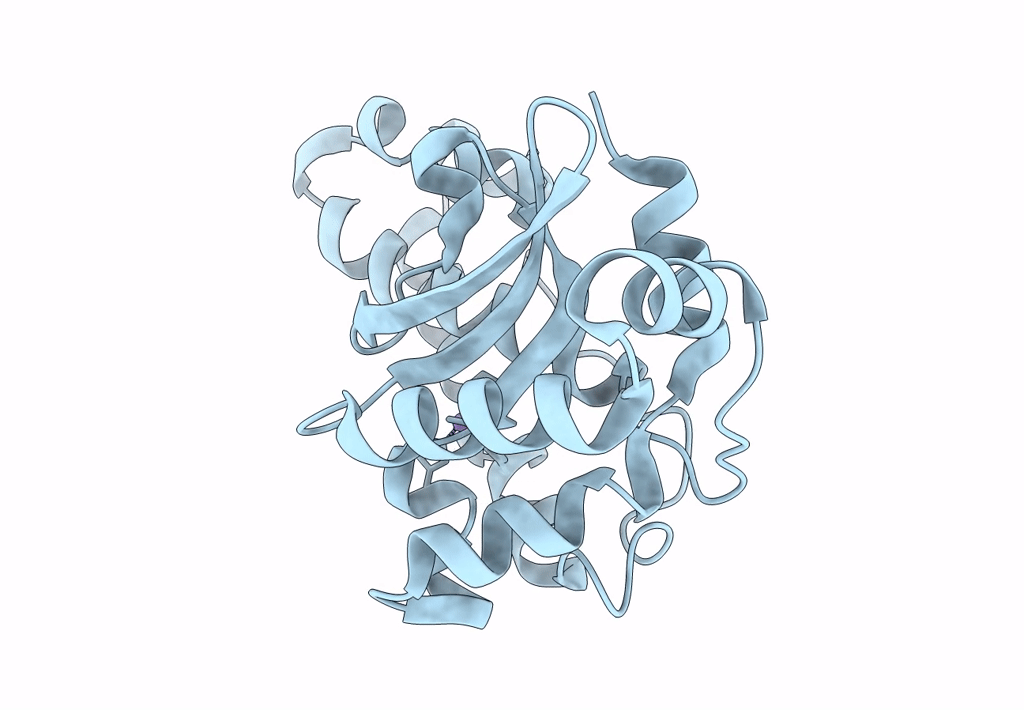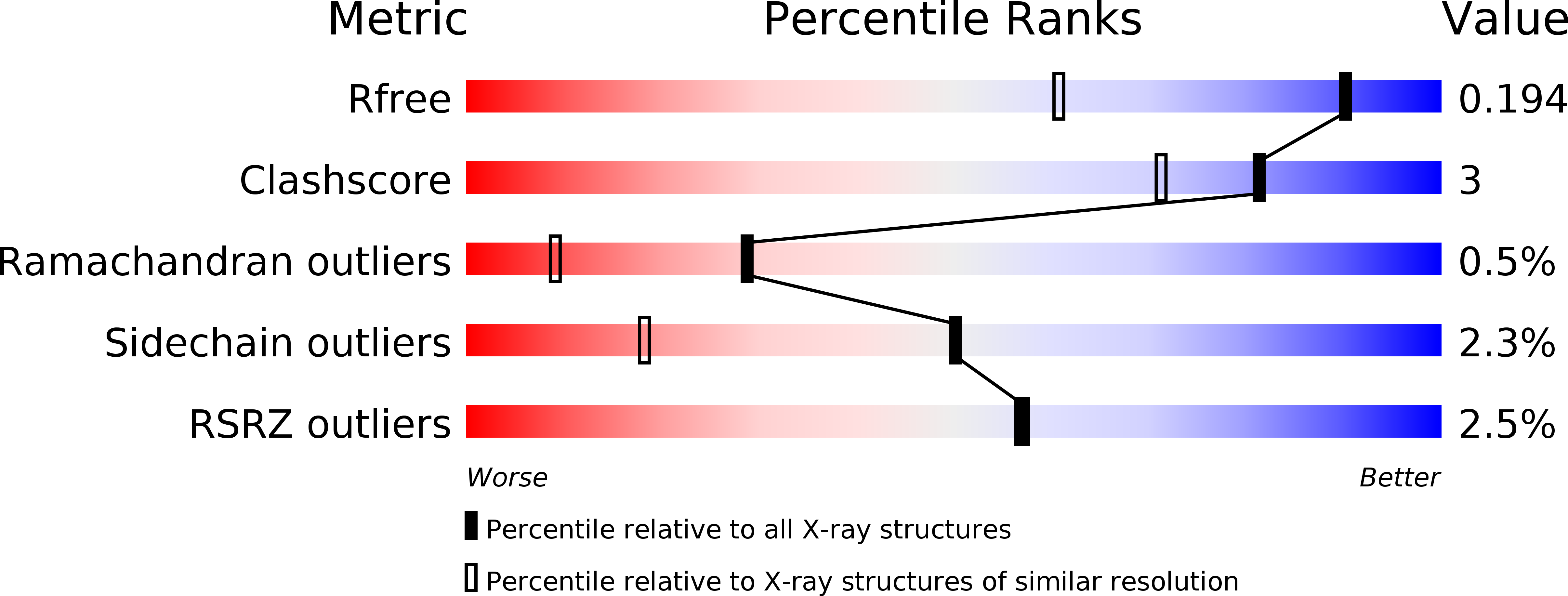
Deposition Date
2017-01-31
Release Date
2018-01-31
Last Version Date
2023-11-22
Entry Detail
PDB ID:
5X2J
Keywords:
Title:
Crystal structure of a recombinant hybrid manganese superoxide dismutase from Staphylococcus equorum and Staphylococcus saprophyticus
Biological Source:
Source Organism:
Staphylococcus equorum (Taxon ID: 246432)
Host Organism:
Method Details:
Experimental Method:
Resolution:
1.40 Å
R-Value Free:
0.18
R-Value Work:
0.14
R-Value Observed:
0.14
Space Group:
P 32 2 1


